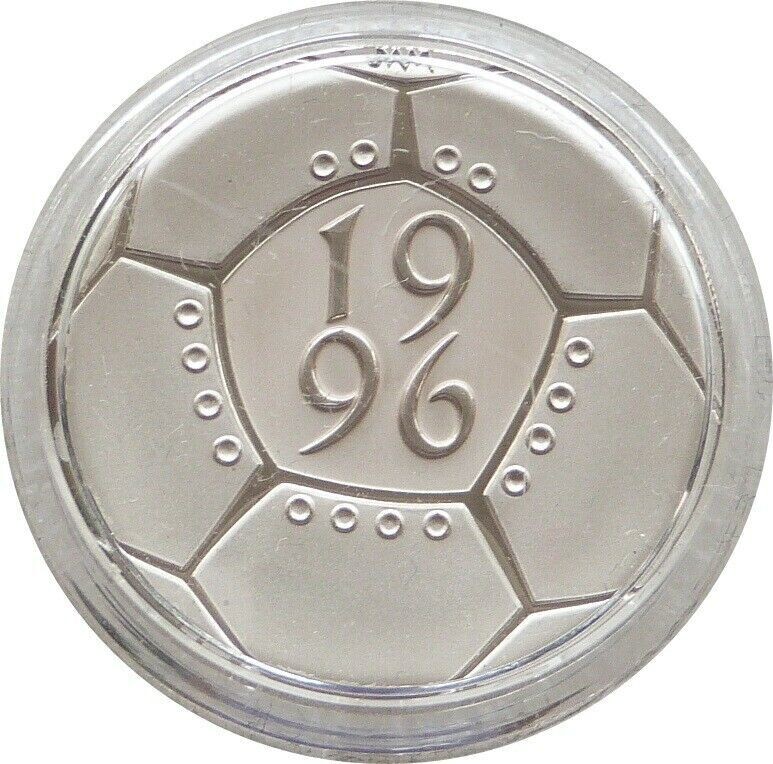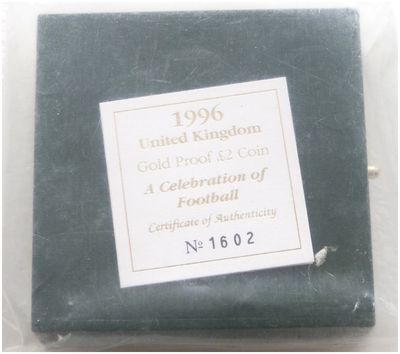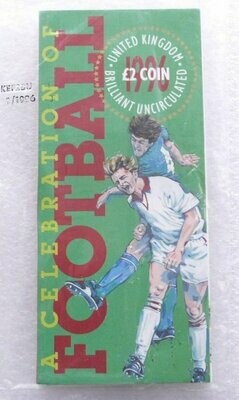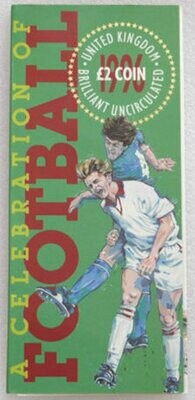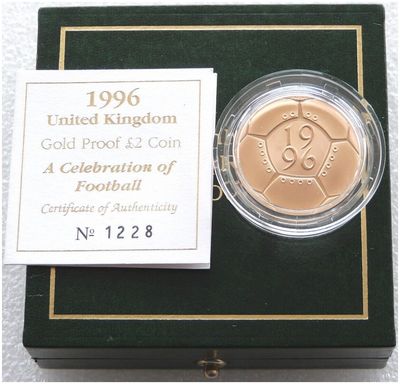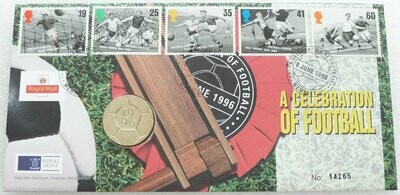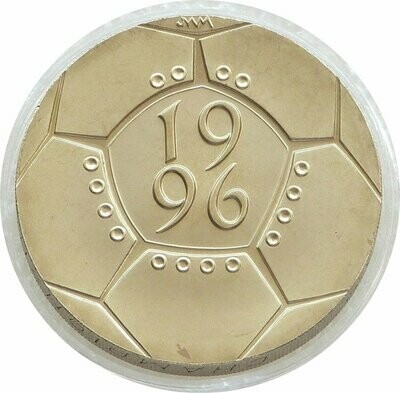1996 Celebration of Football Piedfort £2 Silver Proof Coin Box Coa
In 1996, to celebrate the 10th European Football Championship, the Royal Mint released a Limited Issue Football Piedfort £2 Two Pound Silver Proof Coin struck in solid .925 Sterling Silver.
It is with Britain that the origins and development of the game of football are most strongly identified. The game had been part of the Shrovetide festivities in England from at least the 1100s, played in the fields between neighboring rural parishes or in the streets of towns and villages.
These early matches were a football free for all, the objective is to carry a ball from one end of town or village to the other but because of its lawlessness, football was sometimes banned by royal decree. Hard and fast rules were called for and what was perhaps the most important breakthrough came in 1848 when, embracing the best features of their highly individual rules, representatives of Eton, Harrow, Winchester and Rugby met at Trinity College to hammer out the Cambridge Rules. It is from these that the modern game of football has evolved.
By the early 1990s organized tournaments were contested throughout Europe and in 1958 the first European Championship got underway. In 1996, in the year England hosts the 10th European Championship, the Royal Mint has struck a special design £2 Two Pound Coin in celebration of football.
The reverse design, by John Mills, gives the impression of a football, an impression which has been accentuated by the unusual dished or bowl like effect.
The special year of 1996 is highlighted amid the familiar pattern of the ball, the artist's initials are placed in the top panel and there sixteen small rings to symbolize each of the teams who will compete in the finals, held appropriately in the country that is home to football.
The obverse bears Queen Elizabeth II portrait by Raphael Maklouf.
These legal tender coins have been struck to proof quality using specially prepared dies and highly polished blanks.
Piedforts are coins which have been specially struck on thicker than normal blanks.
As their name suggests they are closely associated with France, where from the twelfth century they were apparently issued by the Kings as presentation pieces.
In Britain the practice of striking piedforts is later and less frequent, but medieval and Tudor examples are known.
- Limited Mintage 7,634 Worldwide
- Piedfort Double the Thickness and Weight of it's Standard Counterpart
- Finished to Royal Mint's Proof Quality in Solid .925 Sterling Silver
- Celebrating the 10th European Football Championship
- Royal Mint Boxed with Certificate of Authenticity
